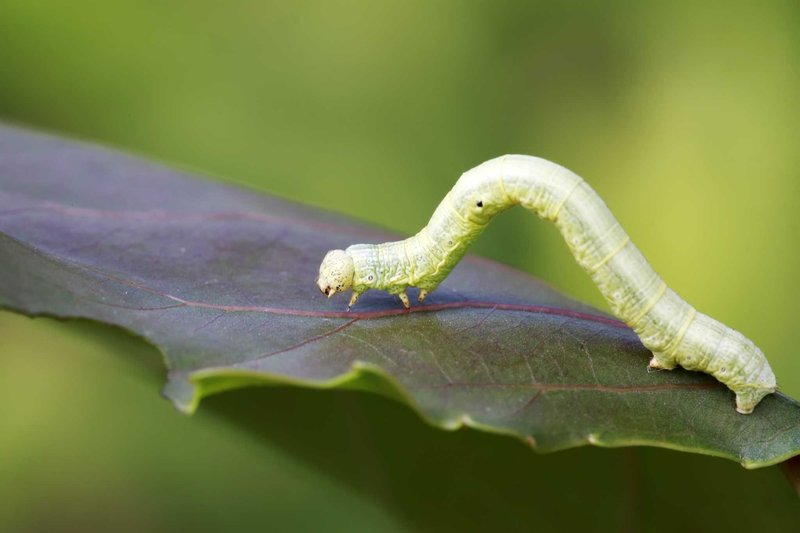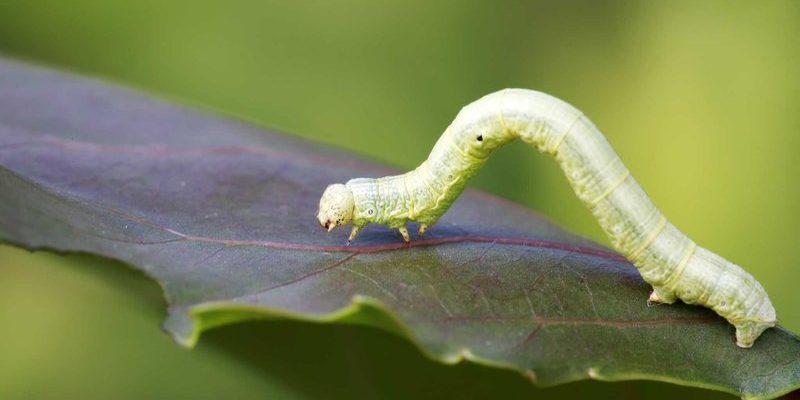
How do they pull this off? Well, it all comes down to their remarkable ability to adapt to the colors and textures around them. Whether they’re lounging on a green leaf or hanging out on a brown twig, inchworms can change their behavior and position to become nearly invisible. It’s a fascinating survival strategy that helps them dodge predators like birds and other hungry insects. Let’s take a deeper dive into the world of these little masters of disguise.
Understanding Inchworms and Their Environment
Inchworms, which are the larvae of various moth species, are found in many parts of the world. They thrive in gardens, forests, and even fields. Generally, these critters are green or brown, resembling the materials they live on. Their environments are rich with foliage, offering plenty of places to hide, but these vibrant colors can also make them a tasty snack for birds and other predators.
How do inchworms adapt to their surroundings? Well, their bodies are soft and flexible, allowing them to blend seamlessly into the leaves or branches they crawl on. They often freeze in place, mimicking the look of a twig or leaf when they sense danger. This stillness, combined with their color, can make them nearly undetectable. You might even find them hanging in a curled position that resembles a dried leaf, enhancing their disguise further.
It’s intriguing to think about how inchworms choose their spots. They seem to have a built-in GPS that guides them to the most effective hiding places. Imagine doing a stealthy obstacle course, using everything from leaves to bark as cover—this is basically life for an inchworm.
The Art of Camouflage: Color and Pattern
Inchworms excel in the art of camouflage, primarily through their color and patterns. Just like a painter chooses colors that match their canvas, these tiny creatures often change shades to blend in. Most inchworms are green, brown, or gray, which are the colors of leaves and twigs. But their camouflage isn’t limited to just a single color.
Some species have markings that resemble the textures of bark or the veins of a leaf, which helps them avoid unwanted attention. When you observe an inchworm resting on a leafy branch, it might take a moment to even spot it, and that’s the whole point. The intricacies in their design allow them to mix in perfectly with their surroundings.
You might be wondering how they manage to match their colors so well. While they don’t change color like a chameleon, their natural coloration provides them with effective camouflage. Their ability to remain motionless is crucial during predator encounters. If you’ve ever played hide-and-seek as a kid, you’ll know that staying still is half the battle!
Behavioral Camouflage: Staying Still
Behavioral camouflage is another technique inchworms use to avoid predators. When they feel threatened, they often freeze in place. This might sound simple, but it’s a wildly effective strategy. By remaining still, they minimize the chances of being seen.
Picture a child playing hide-and-seek, holding their breath while hiding behind the couch. The longer they remain still, the less likely they are to be found. Inchworms do something similar. They bend their bodies and hide themselves in a way that makes them look like part of a branch or leaf.
When inchworms perceive danger, they also engage in a behavior known as “looping.” This is when they curl their bodies and lift their rear ends in the air, making them look like a twig. It’s a clever move that tricks birds into thinking they’ve spotted nothing more than a small piece of nature—a twig instead of a meal.
Physical Defense Mechanisms
While camouflage is super effective, inchworms have a few physical tricks up their sleeves too. They can secrete substances that make them taste bad to predators. When birds or other creatures take a nibble, they may find an unpleasant surprise, which can deter them from trying again. This is a bit like a child who bites into a sour candy—they probably won’t want to try it again!
Another interesting adaptation is their ability to mimic the movement of twigs in the wind. When inchworms inch along, they sway back and forth, resembling a branch being blown by the breeze. This movement helps them blend in even more, as it makes it hard for predators to discern whether what they’re looking at is an inchworm or just a harmless twig.
These defenses remind us that nature is full of surprises and can be quite creative, especially when it comes to survival. Imagine if we had to find ways to avoid getting caught by predators in our daily lives—it’s much harder than it looks!
The Role of Environment in Camouflage
The environment plays a vital role in how successful an inchworm’s camouflage tactic is. In places with plenty of foliage, like forests or dense gardens, they have a better chance of blending in. The various greens and browns provide multiple options for hiding. But what happens when their environment changes, say in an open, barren area?
When the landscape is more exposed, inchworms have to be even sneakier. They might seek out smaller patches of leaves or shrubs that still offer cover. Some inchworms can even adapt their behavior based on seasonal changes. For example, during autumn when leaves start changing colors, they adjust their positions to remain inconspicuous amid the vibrant hues.
What’s fascinating is that inchworms are not only relying on their physical traits but also their understanding of their surroundings. This relationship highlights how essential it is for these creatures to know where to go and when to stay still. It’s like a game of chess, where each move counts toward their survival.
Inchworms are a perfect example of how nature has equipped creatures with various tricks to survive. Through camouflage, both in color and behavior, they avoid becoming someone else’s dinner. Their world is one of careful observation and quick thinking, utilizing their environments to the fullest.
Understanding how inchworms use camouflage to evade predators not only showcases the creativity of nature but also reminds us of the delicate balance of ecosystems. As we learn more about these small but fascinating creatures, we can appreciate the intricate strategies they employ every day.
So, the next time you spot an inchworm leisurely inching along, take a moment to appreciate the clever ways it’s navigating its world. They’re not just mere caterpillars; they’re little ninjas, blending into their surroundings, staying safe, and thriving against the odds. Nature is full of wonders, and inchworms remind us of the beauty of adaptation and survival.

